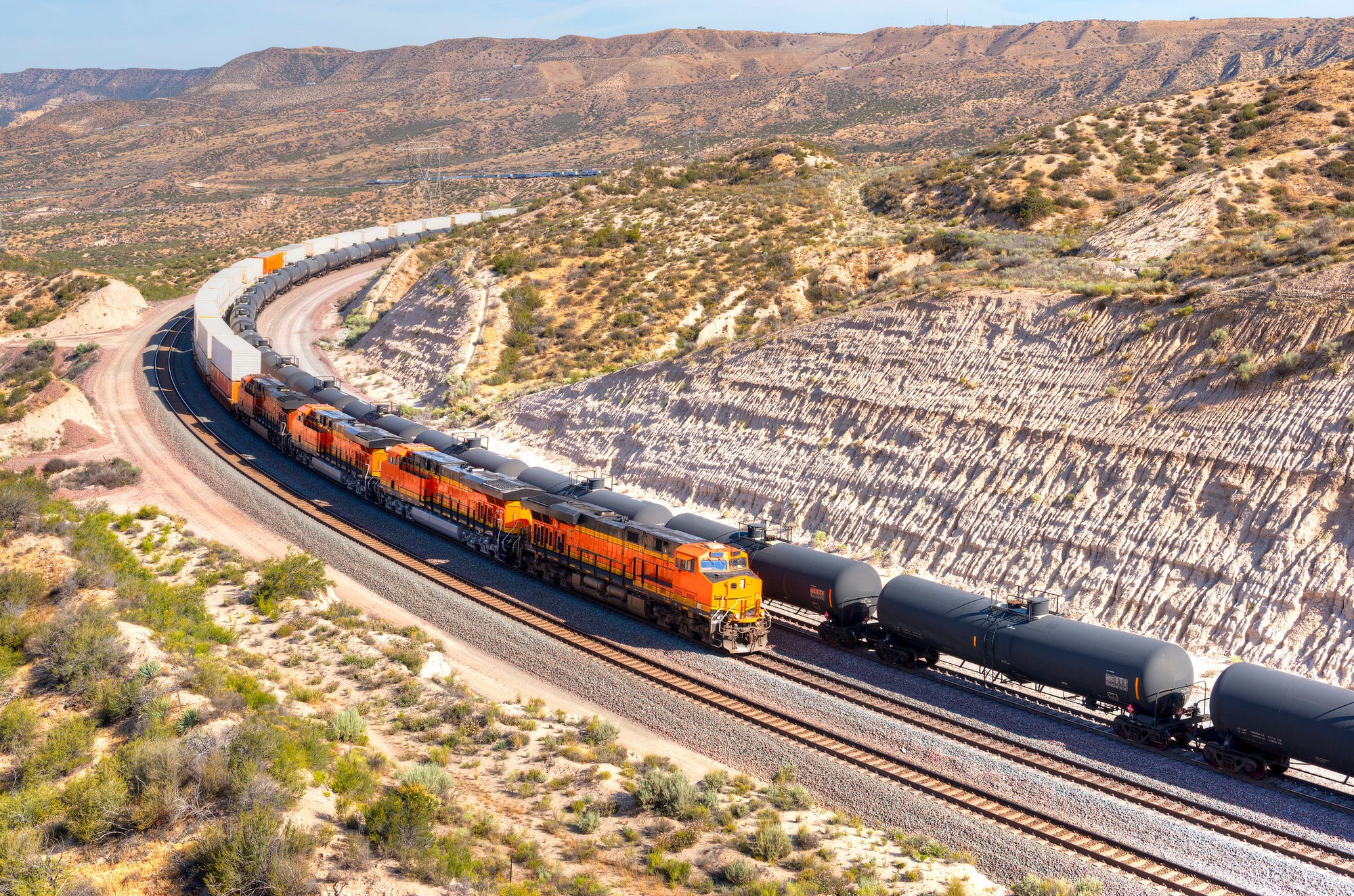If railroads are an accurate barometer of the economy, then we are going to see a slowdown in the first quarter.
I'm not suggesting a recession, but frozenomics is real. Harsh winter conditions, snowstorms, and freezing temperatures slowed down railroad traffic in the U.S. and Canada in January and February.
Norfolk Southern (NSC +0.07%), CSX (CSX +0.11%), Union Pacific (UNP +0.16%), Canadian Pacific (CP +0.38%) and Canadian National (CNI 0.04%) will all see their first-quarter numbers hurt by weather. These railroad stocks acted like a runaway train last year, giving shareholders an average 42.45% return. But I expect the weather slowdown to bring rail's bullish run to a halt in the short term. Indeed, Union Pacific stock is already up 6.3% year to date through Feb. 25 and may be getting a little ahead of itself.
AAR data
According to the Association of American Railroads, total U.S. traffic year to date through Feb. 15 was down 0.4% from last year. For the week ending Feb. 15, 2014, total U.S. carloads were down 2.9% compared with the same week last year. Total U.S. weekly intermodal volume was down 5.7% compared with the same week last year. That's the biggest weekly decline in intermodal volume that I've seen in a long time.
For the first seven weeks of 2014, Canadian railroads reported cumulative volume of 493,932 carloads, down 7% from the same point last year, and 348,146 intermodal units, down 2.1% from last year.
"The CN network is currently adjusting to heavy winter-related traffic backlogs at various locations and, as a result, shipments will experience delays during the next few weeks as we recover," Canadian National Railway posted on its web site Feb. 24.
Retailers, automakers and industrial companies depend on railroads and truckers to move goods and products to warehouses and stores in North America. Ports on the East Coast were hammered by pounding blizzards and snow throughout much of January and February. This made it difficult to move containers from ships to rail cars and trucks. Rail movement of autos and auto parts were down 4.8% week ended Feb. 15, AAR said. CSX and Norfolk Southern operate in the eastern third of the United States.
Union Pacific operates in the western two-thirds of the United States, but has dealt with harsh weather conditions in the Midwest, including Chicago, where freight train traffic speeds were already the slowest in the country.
Here's a look at rail stock performance.
| YTD Return to 2/25 | 2013 Return | Yield | |
| Union Pacific | 6.3% | 42.28% | 2.03% |
| CSX | (5.04)% | 45.81% | 2.17% |
| Norfolk Southern | (2.34)% | 50.11% | 2.37% |
| Canadian Pacific | 2.97% | 48.90% | 0.80% |
| Canadian National | (2.23)% | 25.29% | 1.61% |
The chart tells us most railroad stocks outperformed the 30% return of the Standard & Poor's 500 Index in 2013. So far this year, Union Pacific is leading the pack with a 6.3% return year to date through Feb. 25, followed by Canadian Pacific's 2.97% return.
Outlook for first-quarter GDP
Real gross domestic product -- the output of goods and services produced by labor and property located in the United States -- increased at an annual rate of 3.2% in the fourth quarter of 2013, according to the Bureau of Economic Analysis. In the third quarter, real GDP increased 4.1%.
Some economists, including BBVA Research, predicted 1.6% growth in GDP in first quarter 2014, but I think the weather will hold this number down. Railroads are telling us that economic activity slowed down in January and February. Other numbers on retail, housing, and manufacturing activity have slowed substantially from the robust growth set forth in the second half of 2013.
Final thoughts
It's hard to gauge the economy by listening to pundits. The real numbers by the railroads show there is already a slowdown in traffic. It will take railroads several weeks to get caught up. Snowmelt may cause flooding in the spring as it did last year in Western Canada. This will almost surely affect the bottom lines for railroads. I am holding but not acquiring any more railroad stocks because I believe they are fully valued and may face a short-term correction due to weather concerns. If there is a pullback, investors may want to pick up shares because the long-term outlook for railroads is positive. And we may see a pick up in the economy later in the year.










